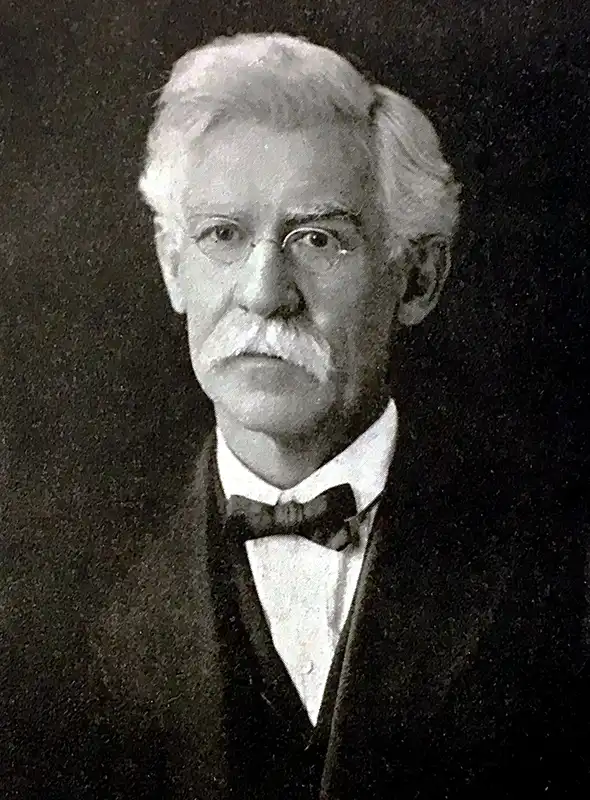Foster Hall

Namesake
Dates
- Built: 1936
- Named: 1951
Map
History
In 1936, Henderson inaugurated its most extensive program for buildings to date, after receiving approval for an allotment of $278,000 on September 30, 1935, from the Public Works Administration for the construction of an apartment-dormitory for women, a dormitory for men, a home for the President, and a central heating plant.
In December of 1919, Henderson had paid $75 for 4.5 acres north of the campus to S. D. Hildreth and others as official trustees of the Memorial Society of Arkadelphia, Arkansas. This tract had been the site of a Black cemetery since 1883, when Mrs. Harriet E. Barkman sold the land to the then acting trustees of the Memorial Society for $20.00.
On October 7, 1935, the Board of Trustees paid $160 for an additional two tracts purchased from S. D. Hildreth and Sam Smith, as the official Trustees of the Memorial Society and Trustees for the Colored People's Cemetery. Near the northeast corner of the campus on Highway 67, these two tracts comprised a Black cemetery totaling about seven acres. With the $160, Hildreth and Smith were to purchase ten acres of land “to be used as a cemetery for the benefit of the colored people of the City of Arkadelphia and for the above-mentioned Memorial Society”. The Board of Trustees wanted this tract for the site of the men's dormitory. However, before the dormitory could be constructed, the College had to arrange for the removal of the bodies from the old to the new cemetery, "free of any cost to those interested in said bodies; it being part of the consideration in this deed and transfer that space will be provided in said new location for all of the bodies now buried on the lands... free of cost”. By March, 1936, all bodies had already been “disinterred from the front half of the recent addition to the campus and reburied in a cemetery several miles out of town.” The bodies in the other were removed in the next few weeks. According to W. C. “Dub” Gray, who, as a young man, helped to remove bodies, most were transferred to the Shady Grove Cemetery, about five miles west of Arkadelphia.
Because of legal tangles and various other delays, the College did not receive the work order until March, 1936.
Once begun, the work continued on schedule. R. T. Higgins of Hot Springs, the contractor for the project, hired about 150 men so that the work could continue simultaneously on all four buildings. The two dormitories and the President's home followed the same Colonial architectural style and had the same shade of brick as that used for Mooney Hall.
Occupied in November, 1936, the men's dormitory, north of Haygood Gymnasium and separated from it by a ravine, also faced Highway 67; it furnished accommodations for 88 men. This dormitory included an apartment for the dean of men on the second floor at the north end of the building, an infirmary, and rooms for the nurse.
When the architects drew the plans for the men's dormitory, they kept in mind the interests of students who wanted to study. The building had three main entrances and no corridor “to tempt the inhabitants into informal football games and track meets.” Rooms were arranged in groups of four, each to accommodate two students. Since a bathroom served each group of four rooms, the dormitory had “no big community shower rooms”.
At last, the building was ready for use. The long-awaited transfer from the various rooming houses in town to the men's dormitory began on November 5, 1936. Because all boys working at the College had to live in the new dormitory, most of the rooms were filled within a week. S.B. Sudduth had also moved into the apartment for the Dean of Men.
Known simply as the Men's Dormitory for 15 years, this structure received no name until June 15, 1951, when a committee in “charge of suggesting names for the unnamed buildings on campus” proposed that the College honor the memory of revered professor Benjamin Smith Foster; thus, the men's dormitory became known as Foster Hall in 1951.
The College dedicated all five new buildings in a special ceremony in the College Auditorium at 1:00 p.m. as part of the Homecoming events on Saturday, October 31, 1936. Several dignitaries were present at the ceremony. United States Senator Hattie Caraway of Arkansas, a special guest, spoke briefly. Attorney General and Governor-elect Carl Bailey delivered the principal address.When Newberry Hall opened in September, 1968, the College renovated Womack and Foster Halls to house women students in 1968-69. They were reassigned to men the following year. As new dormitories were built, Foster Hall eventually became the home of the Technology Center, Disability Resource Center, and Advising Center.
